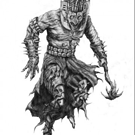Along the lines of my later post http://discourse.urho3d.io/t/runtime-geometry-creation/337/1 , what about deformation, on generated geo or even imported geo…
Do you have access to the verts of imported geo?
For example, if I wanted to do some fake softbody type deformations on collision, are there methods that will let me get and set the point positions? What about velocities of points? can i get those? and if not, would I be able to grab the verts at a previous time step and potentially calculate them myself?
I’m apologize for all the hypotheticals. I am just curious how far and how easily I can do data manipulation at the vert level…



 I’ll hope to add an example of C++ dynamic geometry manipulation after I implement that.
I’ll hope to add an example of C++ dynamic geometry manipulation after I implement that.
